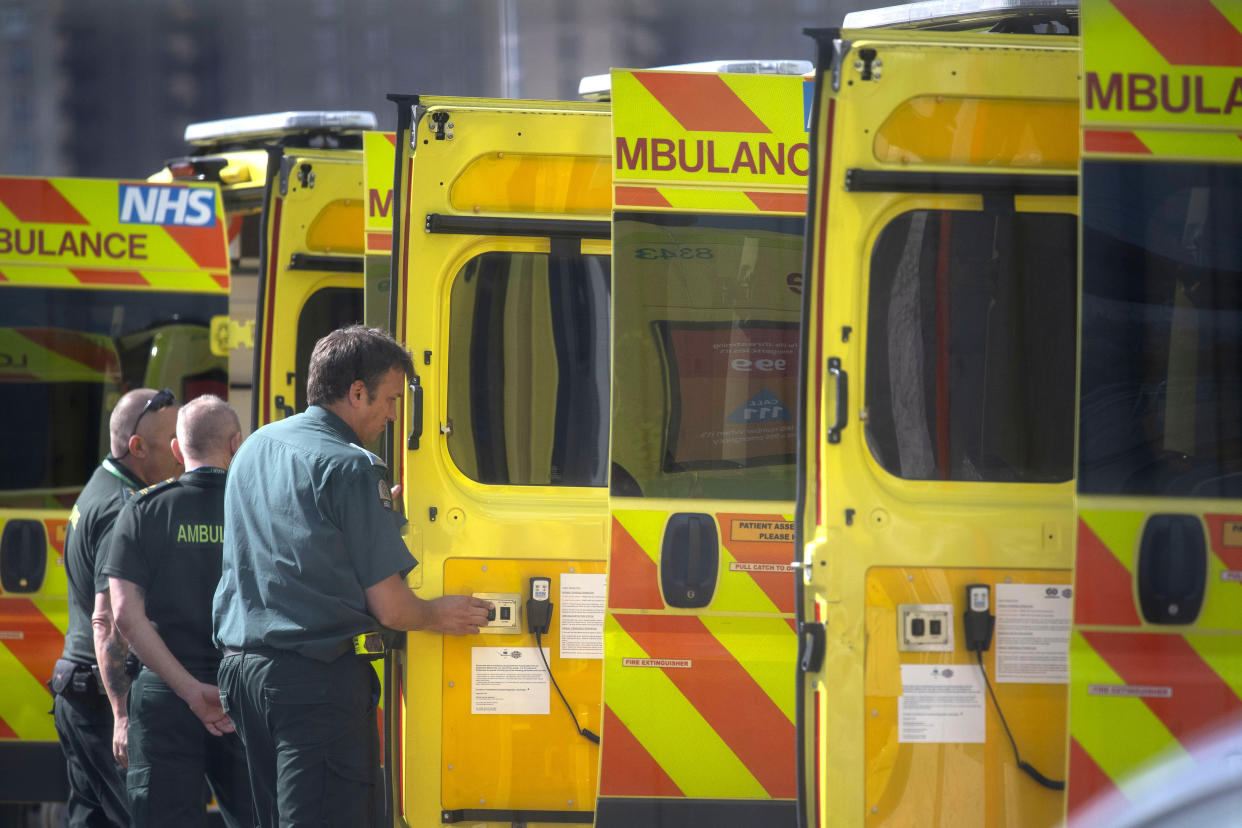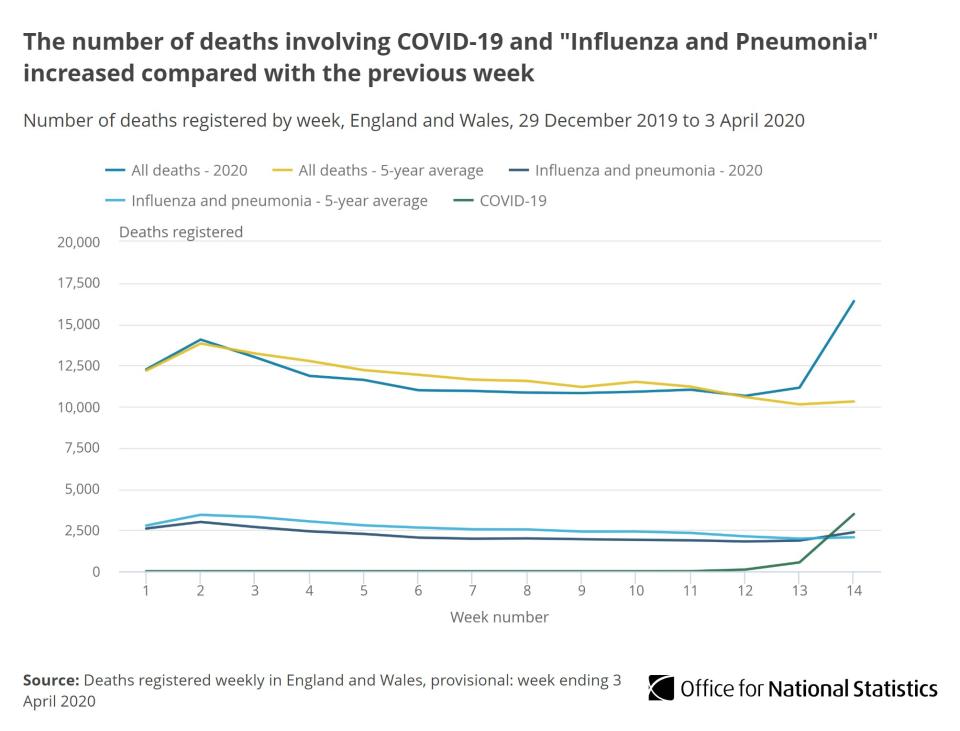Coronavirus: The chart that shows how COVID-19 has impacted the death toll in England and Wales

Coronavirus has helped cause a significant increase in the total number of weekly deaths, figures published on Tuesday have revealed.
The Office for National Statistics (ONS) said 3,475 deaths registered in England and Wales in the week ending 3 April mentioned COVID-19, the disease caused by coronavirus.
That means about one in five deaths across the two countries right now is linked to COVID-19.
The disease helped contribute to the total number of deaths in that week of 16,387, which was 6,082 more than expected at this time of year.

However, while coronavirus accounted for more than half of the weekly increase in deaths, it is not yet clear what is making up the remainder.
The ONS said the total number of deaths registered was the highest weekly total since it started compiling such data in 2005.
We have also published our figures for deaths registered in the week ending 3 April 2020 (week 14).
The provisional number of deaths registered in England and Wales in the week ending 3 April 2020 was 16,387 https://t.co/PAIDIPaCjV#COVID19 #coronavirus pic.twitter.com/VoD3Ri8FOW— Office for National Statistics (ONS) (@ONS) April 14, 2020
The overall weekly total up to 3 April marked an increase of 5,246 deaths from the previous seven-day period.
The 3,475 deaths that mentioned coronavirus are equivalent 21.2% of all deaths, compared to the 539 deaths (or 4.8% of all deaths) in the previous week.
Latest coronavirus news, updates and advice
Live: Follow all the latest updates from the UK and around the world
Fact-checker: The number of COVID-19 cases in your local area
6 charts and maps that explain how COVID-19 is spreading
The ONS figures show there were 5,979 deaths involving COVID-19 in England up to 3 April (and which were registered up to 11 April), compared with 5,186 deaths in hospitals in England for the same period, reported by NHS England.
The ONS total is 15% higher than the total published by NHS England.
The ONS said of the deaths involving COVID-19 registered up to 3 April that 90% – or 3,716 deaths – happened in hospital, with the rest occurring in hospices, care homes and private homes.
Of the 406 coronavirus-related deaths that took place outside hospitals, 217 were registered in care homes, 33 in hospices, 136 in private homes, three in other communal establishments and 17 elsewhere.
The numbers are based on where COVID-19 or suspected COVID-19 is mentioned anywhere on the death certificate, including in combination with other health conditions, the ONS said.
Watch the video below
The NHS figures only include deaths in hospitals where a patient has been tested for COVID-19.
In London, almost half (46.6%) of deaths registered in the week ending April 3 involved COVID-19, while the virus accounted for 22.1% of deaths registered in the West Midlands.
Martin Hibberd, professor of emerging infectious disease at the London School of Hygiene and Tropical Medicine, said the new ONS figures “clearly show the impact of COVID-19 for the first time”.
He said: “The weekly total for all deaths is the highest recorded since records began in 2005 and represents a 37% increase more than expected.
“This weekly number will become a very important number for evaluating the impact of COVID-19 and our response, as it essentially summates all the possible effects together.
“We know that for some situations, we may be overplaying the role of COVID-19, for example where COVID-19 was mentioned in a death but where it may have actually played only a minor role.
“Whereas in other situations, a death may not mention coronavirus, even though it may have contributed, possibly as a result of the indirect consequences of the lockdown and stretched healthcare services.”
It was reported on Tuesday that the government is set to extend the UK’s social distancing restrictions for another three weeks.
Under the government’s “stay at home” restrictions, people are only allowed to go outside for food, health reasons or work (but only if they cannot work from home). If people do go outside, they must stay two metres away from others.
On Monday, foreign secretary Dominic Rabb, deputising for prime minister Boris Johnson while he recovers from his battle with coronavirus, said it was still unclear if the UK should have introduced its measures earlier.
Rabb insisted the government’s response to the pandemic “is working”, despite the UK death toll going past the 11,000 mark.

 Yahoo News
Yahoo News 


